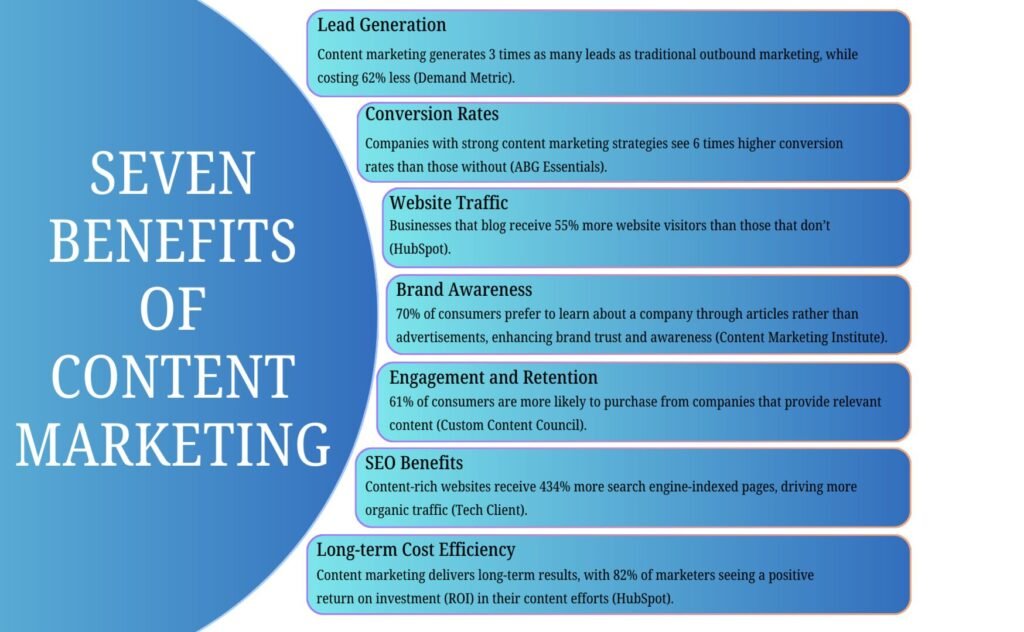Emotional Marketing
Emotional marketing!
Have you ever thought about how brands pull us in without us even realizing it?
That’s emotional marketing at work.
From the baby diapers we trust to the luxury cars we dream about, companies across all industries are tapping into our emotions to create powerful connections. And, they don’t just sell products—they make us feel something.
Pride, belonging, or even nostalgia.
And here’s the best part: emotional marketing isn’t just for the big players.
No matter your company’s size or industry, this approach can make a difference.
It’s not only about attracting attention; it’s about creating that special spark that keeps people coming back for more. And guess what? You don’t need a video or a flashy campaign to do it.
Let’s dive in and see how emotional marketing can work its magic for you.
What is Emotional Marketing?
Emotional marketing is all about creating genuine connections with people by tapping into their feelings. This powerful strategy doesn’t just promote products; it inspires reactions and makes people care. When a brand can evoke emotion, it becomes one of the most impactful ways to market your offerings.
Think about those short videos you often see on TikTok, YouTube Shorts, or Instagram Reels.
Ever notice how a single clip can make you want a product so badly?
And, before you know it, it’s on its way to your door?
That’s emotional marketing at work—it’s the force that transforms a quick video into a lasting impression.
Now, imagine harnessing that same influence in your own strategy. By strengthening your digital content marketing with emotional marketing techniques, you can build meaningful connections that resonate and inspire loyalty.

Emotional Marketing in Content Marketing Strategy
Being a successful content marketing strategist requires more than creativity and technical skills like video editing or photo design. While those are key, there’s an added layer: the ability to connect with your audience on an emotional level.
This is where practice, empathy, and insight come into play.
Your audience should feel, “I get it—they understand me.”
Think of those videos where someone buys a tool and suddenly, even the toughest tasks seem doable. But it doesn’t have to be limited to physical products; it could be a SaaS solution or an innovative IT tool.
Think of Canva, Mailchimp, Airtable, HubSpot, Salesforce, and Zoom.
They’ve mastered emotional marketing by crafting stories that evoke emotions—relief, excitement, even a touch of schadenfreude. Their narratives are simple, relatable, and resonate with people’s everyday challenges, making them feel understood.
But persuading customers to take that next step—to buy—is more nuanced.
It’s about building a brand and creating trust that goes beyond the transaction.
This is where emotional marketing shines. By forming emotional bonds, you make people feel proud to be a part of what you offer. Emotional marketing is the heart of effective content strategy and storytelling, transforming passive viewers into loyal advocates.
Key Aspects of Emotional Marketing
Creating content that resonates emotionally is no small feat.
Yet, mastering this skill can transform your digital marketing efforts, building stronger connections and lasting loyalty. Here are some key aspects of emotional marketing to help you engage your audience on a deeper level:
- Inspire joy or excitement: Let your brand spark happiness and enthusiasm.
- Tap into nostalgia: Use familiar elements to evoke fond memories that resonate.
- Create a sense of belonging: Make customers feel like they’re part of a community.
- Leverage social proof: Build trust and credibility by showcasing real user experiences.
- Use FOMO (Fear of Missing Out): Create urgency or scarcity to make your offerings feel essential.
- Understand emotional pain points: Recognize your audience’s challenges on a personal level.
- Provide relief and satisfaction: Offer solutions that genuinely improve your audience’s lives.

Storytelling in Content Marketing
Building an emotional connection with your audience hinges on mastering the art of storytelling. Let’s explore how storytelling—especially with an emotional marketing approach—plays a pivotal role in content marketing.
Storytelling blends creativity, structure, audience awareness, and purpose to draw out emotions. Its real power lies in connecting with the audience on a personal level, making them feel seen and valued. While storytelling techniques in social media and content writing share some common ground, they also have distinct differences.
Let’s dive into these similarities and differences to better understand how to craft impactful storytelling across both social media and content writing (like blogs).
Similarities between Storytelling in Social Media and Content Writing
- Both engage the audience on an emotional and intellectual level.
- Both social media and content writing require a clear, compelling core message.
- Both use a relatable story format to resonate with readers.
- Both integrate visuals and text to bring the story to life.
- Social media and content writing, both maintain a consistent brand voice.
- Both aim to evoke emotions, fostering a strong, lasting bond with the audience.
Differences between Storytelling in Social Media and Content Writing
- Social media storytelling is brief and highly visual, while content writing allows for more detail and depth.
- Social media moves quickly, catering to a fast-paced audience, whereas content writing provides a slower, more immersive experience.
- Social media has immediate reach and visibility, while content writing can take longer to build traction.
- Social media focuses on bite-sized snippets; content writing provides a comprehensive narrative.
- Social media content is often short-lived, while content writing has a longer lifespan and ongoing impact.

Strategic Copywriting for Storytelling and Emotional Engagement
Effective copywriting is at the heart of successful storytelling and emotional marketing.
It enables brands to capture attention, foster loyalty, and communicate messages in ways that are both relatable and impactful. Good copywriting takes complex ideas and simplifies them, making them easily digestible and emotionally resonant. This approach helps brands build stronger connections, enhance their identity, and create experiences that stick.
When storytelling and copywriting are combined, the result is a compelling narrative that captivates the audience and amplifies emotional marketing. A well-crafted story conveys your brand’s message while evoking emotions, making your audience feel understood and valued. This emotional connection nurtures loyalty and turns casual viewers into dedicated customers.
Essential Copywriting Techniques for Emotion-Driven Storytelling
Here are six tips to elevate your copywriting and make your storytelling more emotionally engaging in your content and marketing efforts:
- Know Your Audience: Dive into their demographics, interests, pain points, and aspirations to craft messages that truly resonate.
- Define Your Message: Be clear about what you want to convey, focusing on benefits, values, or solutions that matter to them.
- Use Relatable Characters: Bring your story to life with characters—whether customers, employees, or a personified version of your brand.
- Evoke Emotion: Choose language and scenarios that tap into feelings like joy, inspiration, or empathy.
- Keep It Simple: Maintain clarity and simplicity to make your story easy to understand and impactful.
- Stay Consistent: Match your tone and voice with your brand identity, keeping it steady across all storytelling scenarios.
By applying these tips, you can create narratives that not only engage but also inspire, turning every piece of content into a tool for emotional marketing success.

Implementing Vulnerability in Storytelling
Vulnerability is often seen as a point of weakness, but in emotional marketing, it’s a powerful tool.
By incorporating vulnerability, you bring authenticity to your storytelling, making your message feel real and relatable. This approach not only evokes strong emotional responses but also fosters trust and connection with your audience. In a world of polished marketing, showing vulnerability sets your campaign apart, resonating on a deeper level.
Here are some tips for using vulnerability effectively in storytelling:
- Share Personal Experiences: Reveal your own challenges or setbacks to make your story authentic and relatable.
- Highlight Imperfections: Discuss mistakes or flaws to add a genuine, human touch.
- Use Honest Language: Choose sincere, straightforward language in a conversational tone for more impact.
- Show, Don’t Just Tell: Illustrate vulnerability through actions and details, showing both struggle and growth.
- Combine Vulnerability with Strength: Balance vulnerability by showcasing resilience and how challenges were overcome.
Creating a Narrative Hook
What is a narrative hook?
It means capturing your audience’s attention from the very beginning and compelling them to keep reading or watching. So, a narrative hook is your first chance to make an emotional connection. Every brand dreams of keeping its audience glued to the story until the last word, and an impactful hook is key to achieving that.
Here are some tips to create a compelling narrative hook in your storytelling:
- Keep it Concise: Make every word count. A brief, powerful hook leaves a strong initial impression.
- Engage the Senses: Transport your audience by using vivid sensory details that let them see, hear, or even feel the story.
- Create Curiosity: Spark curiosity by leaving a few questions unanswered, inviting your audience to dive deeper.
- Match the Tone: Align your hook with the story’s tone—whether inspiring, suspenseful, or heartfelt—to build a cohesive emotional experience.
Key Engagement Metrics
Publishing content is just the start. To make a lasting emotional impact, you need to understand how well your story resonates. Remember, every piece of content may connect differently with your audience—some will strike a chord, while others might not. This variability isn’t a reflection of your ability; it’s a part of understanding your audience and adapting.
Tracking the right engagement metrics helps you gauge emotional resonance, refine your approach, and strengthen future strategies. Here are some key engagement metrics to focus on:
- Page Views: See how many times your content captures attention.
- Unique Visitors: Understand the reach and diversity of your audience.
- Time on Page: A longer time spent indicates stronger interest and emotional engagement.
- Bounce Rate: High rates may mean it’s time to re-evaluate relevance and appeal.
- Scroll Depth: Measure how deeply visitors dive into your content.
- Click-Through Rate (CTR): Learn what motivates readers to explore further.
- Social Shares: Each share signals your story’s power to inspire others.
- Comments and Interaction: Gauge audience engagement and emotional response.
- Conversion Rate: See how well your content turns interest into action.
- Return Visitors: Returning readers indicate a lasting connection and trust.
The Power of Emotional Marketing: Conclusion
For small SaaS and IT businesses, emotional marketing is a game-changer.
It’s not just a way to promote your product—it’s a strategy for building genuine connections that inspire loyalty. By connecting with your audience on a personal level, you create more than customers; you create a community that feels invested in your journey and proud to be part of your brand.
Incorporating emotional marketing means embracing storytelling as a core element of your content strategy. Whether through quick social media posts or in-depth blog content, storytelling allows you to combine creativity, empathy, and structure to form memorable experiences that keep your audience engaged.
Finally, measuring the success of your emotional marketing is key. By analyzing engagement metrics, you can refine your approach and ensure your stories continue to resonate and drive meaningful results. For small SaaS and IT businesses, emotional marketing turns your brand from a service provider into a trusted, unforgettable partner.

